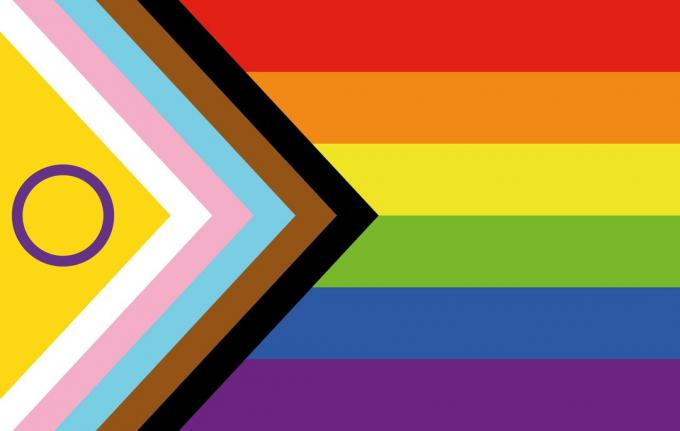The flags of the LGBTQIAP+ movement are ways of symbolically represent diversity of sexual orientations, gender identities and cultures within the community.
There are many flags within the movement, each symbolizing an orientation, identity or group. The famous rainbow flag is the general one, encompassing everyone.
LGBTQIAP+ pride flag

A rainbow flag is the best known of the LGBT+ movement. It has been used since the 1970s and has 6 colors. Red symbolizes life, orange, invigoration. Yellow represents sunlight, and green represents nature. Blue and purple symbolize serenity and spirituality, respectively.
New LGBTQIA+ pride flag
The new flag has been used since 2021. Over the colors of the traditional rainbow flag, black and brown lines representing black and non-white people were inserted.
The turquoise, pink and white lines are the colors of the transgender flag, while the yellow triangle and purple circle represent the intersex community.
lesbian flag
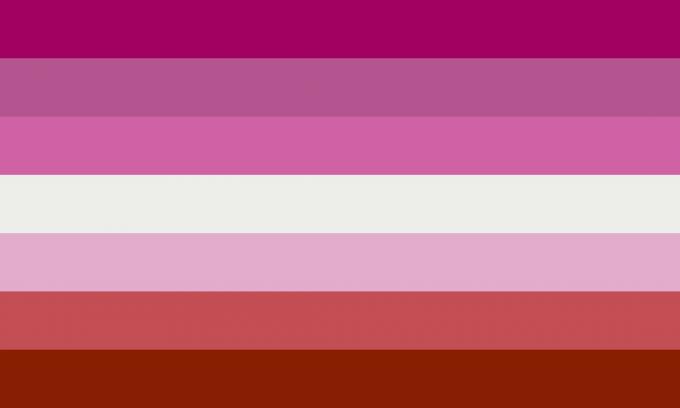
The flag of the lesbian community has seven stripes in shades of
pink, purple It is red. They are colors that symbolize femininity, love, independence, serenity and the unity of the community. The white stripe in the center represents lesbian transgender women.Non-binary gender flag
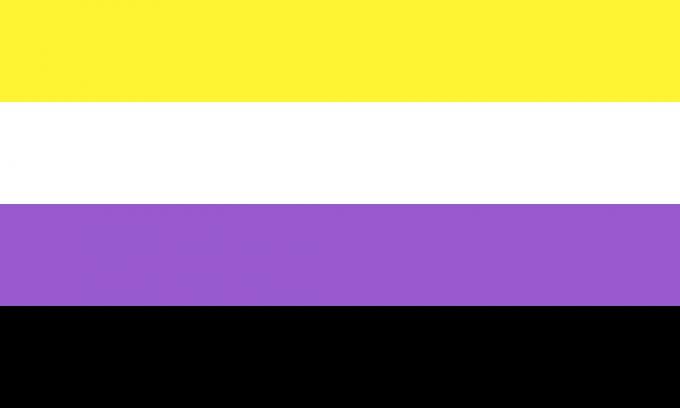
The flag was created in 2014 to representing non-binary people. Non-binary people are those who do not identify with the male or female gender, identify with both or, at certain times, identify with one and then with the other.
Yellow symbolizes gender neutrality, moving away from binary (male and female, often represented by blue and pink, respectively). White refers to people who identify with multiple genders. Purple symbolizes fluidity between genders, while black represents genderless.
understand more about what is non-binary gender It is how to use neutral pronouns.
transgender flag
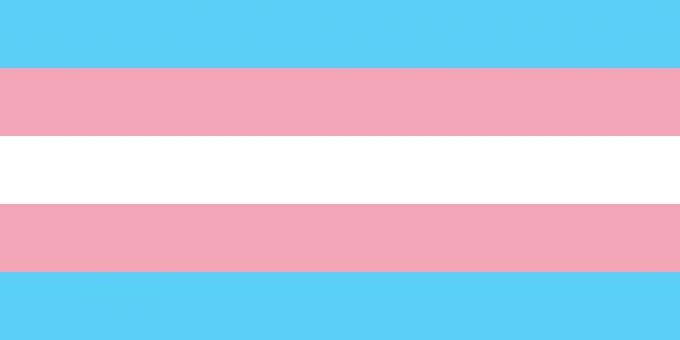
The flag was created in 1999 by an American trans woman, Monica Helms. The bands in blue are associated with the use of color to represent the male universe, just as the pink color refers to the female universe. The white center stripe symbolizes non-binary people.
Non-binarity is part of the transgender spectrum. Being the term trans an umbrella expression for various types of identification of gender.
understand the difference between transgender and cisgender.
bisexual flag
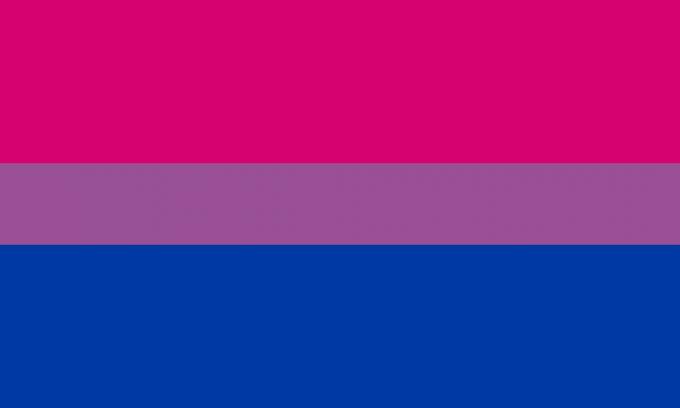
It was designed in 1998. The color pink represents sexual and/or romantic attraction to people of the same gender. Blue symbolizes sexual/romantic attraction to people of the opposite gender.
The central band is purple, a color resulting from the combination of blue and pink (or red), symbolizing attraction to both the opposite gender and the same gender.
gender fluid flag

Gender fluid people are non-binary people, whose gender identification flows between the various genres. The colors chosen for the flag represent this fluidity.
Pink symbolizes the feminine. The white, the absence of gender. Purple represents the combination possibilities between the female and male genders. The black color represents gender identifications that run away from masculine and feminine. Blue symbolizes the masculine.
queer flag

The flag that represents the queer community has the color lilac as a symbol of androgyny, white representing agender identity and green, non-binary people.
People who identify as queer are those who do not identify with gender standards. Their identities are between and beyond normative genres.
intersex flag
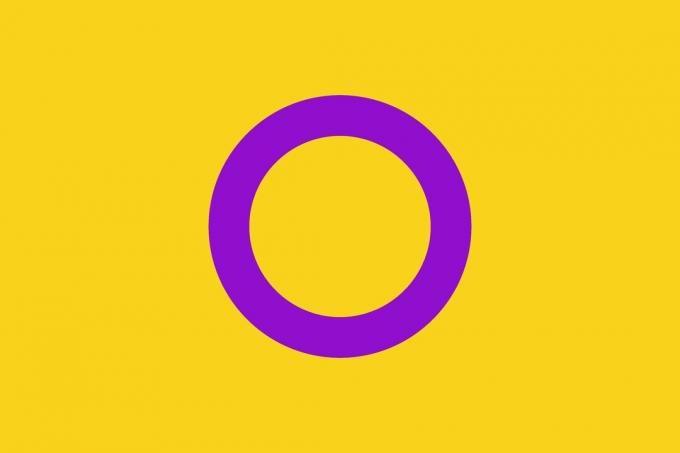
The flag was created in 2013 to represent the struggle of intersex people for bodily emancipation. Yellow color symbolizes gender neutrality, non-binary. The purple circle represents totality.
pansexual flag

The pink in the pansexuality flag symbolizes the feminine, the yellow for non-binary people, and the blue for the masculine. Pansexuality is sexual and/or romantic attraction who is interested in people, regardless of their sexual orientation or gender.
know more about what is pansexuality.
polysexual flag

The polysexual flag symbolizes those who are romantically and/or sexually attracted to multiple genders. It is broader than bisexuality, but less than pansexuality. Polysexual people are attracted to many genders, but not all.
The pink color on the flag represents the attraction for the feminine, the blue, for the masculine, and the green, for the genders that flee the binarism.
flag of polyamory
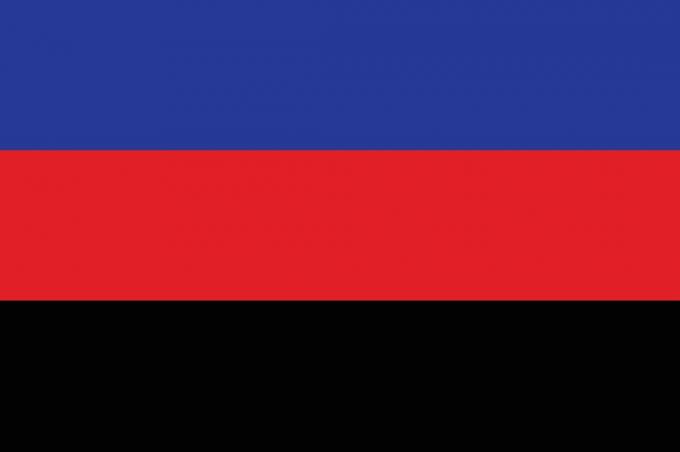
The polyamory flag represents people with multiple partners, in non-monogamous relationships. The blue on the flag symbolizes openness and honesty, the red, love, while the black represents those who, due to prejudice, have to hide their relationships.
Some flags have the π (pi) symbol in gold in the center. Pi would mean the infinity of possible loves within polyamory.
agender flag
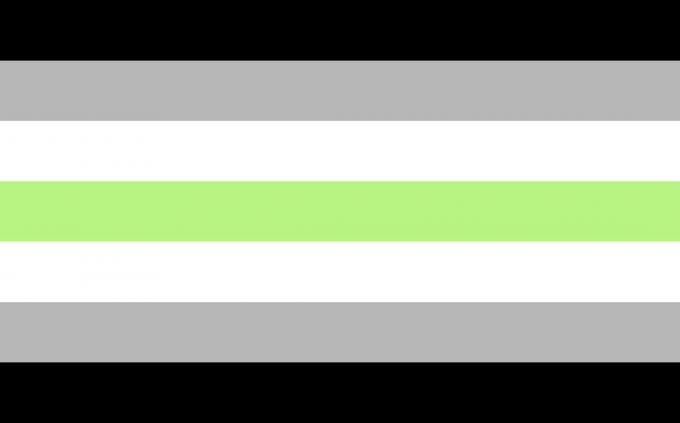
agender people do not identify with any gender. Its flag, in black, gray and white, symbolizes neutrality or the absence of gender. Green represents non-binary people.
asexual flag

The asexual flag has black color symbolizing asexuality, white representing allies and purple, community. Asexual people are those who have no sexual interest. of any kind.
flag of aromanticity

It is the flag that represents the people who don't feel romantic attraction. Aromantic people can have any sexual orientation, but their relationships are not guided by traditional romanticism.
On the flag, black and gray represent aromantics (asexual or allosexual). White symbolizes platonic relationships. Light green refers to the aromantic spectrum and darker green to romantic non-attraction.
bear flag
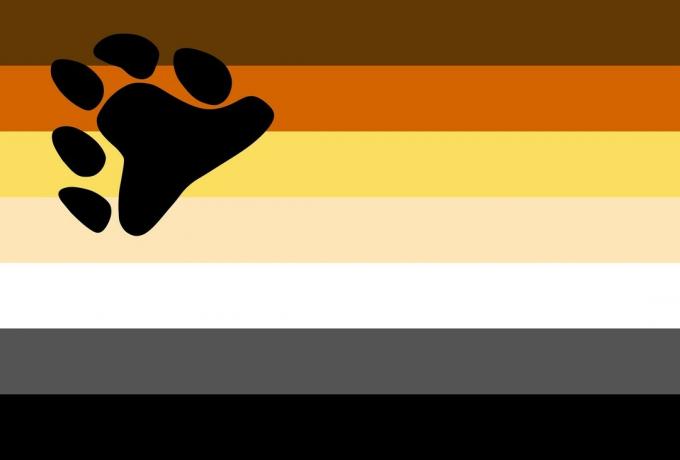
The so-called bears are a gay community subculture, made up mainly of gay or bisexual (cis or trans) men.
Generally, men belonging to the bear community like to keep their hair on their body and face, they are big and strong, and hence the naming of bears.
The colors of the flag, with various shades of brown, yellow, white and black, symbolize the coat of bears and also the skin color of community members. The footprint in the upper left corner also refers to the bear animal.
understand better what is homophobia.
Other flags of the LGBTQIAP+ cause
Flag of the allies of the LGBT+ cause
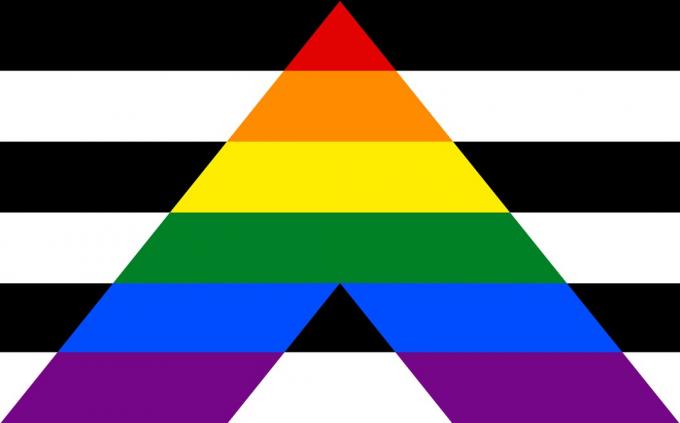
It is also known as the straight ally flag. It was created in 1973 by family members and friends of LGBT+ people, who supported the community in its fight for civil rights and against homophobia.
The flag has a striped background, in black and white, referring to heterosexuality, and a colored triangle above, symbolizing the rainbow flag of LGBT+ pride.
See too what does heterosexual and heteronormativity mean.
LGBT+ racial flag

It is the flag that included the colors black and brown symbolizing black and non-white people in the movement. The flag was created in 2017, and aims to mark the racial agenda within the movement and the LGBT+ community.
understand better what is racism.
Learn more about meanings of the acronym LGBTQIA+ It is what is gender identity.

